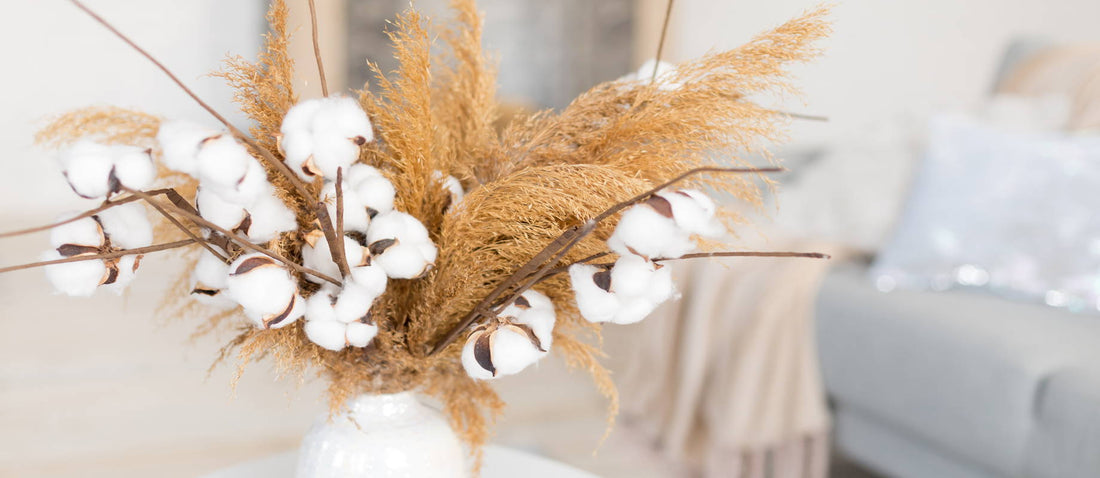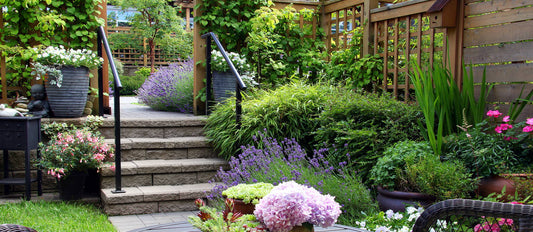Dried flower bouquets are back in style. This trend from the 70s and 80s is in again. Unlike a cut flower bouquet, a dried flower bouquet can be displayed for months or even years. That's a long time to enjoy your flowers! And once you have dried them, there are other green crafts you can try. Unfortunately, not all plants and flowers are suitable for drying. Bakker can help you choose the best flowers and plants and show you the best way to dry them.
What species make the best dried flowers?
Not all plants and flowers are suitable for drying. Flowers with sturdy, woody stems and light colours are the top choices in any dried bouquet. These mostly include flowers from perennials such as lavender, roses and hydrangeas. These flower stems are perfect for drying and bring beautiful colours to your dried flower bouquet. Some flowers that grow from seeds, such as sunflowers and poppies, are also very well suited, but a lot of plants that grow from flower bulbs do not like being dried. It would be better to include these flowers in a cut bouquet. Finish off your dried flower bouquet with some greenery from your very own garden. Ornamental grasses are also highly suitable for drying and no bouquet should be without them. Miscanthus stems and plumes of pampas grass are particularly good options.
What are the best ways to dry flowers?
There are lots of ways to dry plants and flowers. Your drying method depends on what you are going to do with your dried flowers, how much time you have and the quality. Bakker has set out the four best drying methods for you:
1. Drying with air
The most common way to dry flowers and plants is to use air. Pick the flowers and plants that you want to dry from your cutting garden. Strip excess leaves from the stems so that the flowers or plants will dry quicker. Then sort the flowers into groups by variety, bind then together and hang them upside down in an area that is dark and dry. Ideally, this area should not be too cold. A garage or an attic above the heating system would be good choices. If the flowers and plant are left to hang in a damp area, they can become mouldy. To avoid this, make sure that your bundles are small or hang all of the flowers and plants individually. After two to four weeks, you will have a gorgeous, dried flower bouquet. The exact amount of time it takes for the flowers to dry depends on how thick the stems are and the environment where the plants are hung.
2. Silica gel
If you don't have somewhere dry and dark in your house or you don't want to wait for weeks, silica gel makes your flowers dry faster. Use an airtight container that is large enough to put the flowers and plants into for drying. Fill the bottom of the container with two to three centimetres of silica crystals. Place the flowers and plants in the container with the leaves in the silica gel, making sure that the flowers and plants are not touching each other. Add more silica gel until the flowers and plants are completely covered. Shut the lid of the container so that it is airtight. Check if the flowers and plants are well dried after a few days. They will be ready when the petals feel like paper.
3. Drying in a hot oven or microwave
You will get the fastest results by drying in a microwave or oven. This is also the riskiest method as it is very easy to accidentally dry flowers and plants at too low or too high a temperature. You also use silica gel for this method. Take a small, tall container and cover the bottom with silica gel. Place the flowers and plants upside down in the container and put the container in the microwave or oven. You can only use the oven method if you have a fan oven. Start at a low temperature, approximately 40 degrees and experiment to find out what works for each type of plant. Two to five minutes should be enough to dry the plants. After drying, it is important to carefully clean the flowers and plants to remove any silica gel.
4. Pressing
Perhaps you remember pressing flowers between books for your collection years ago. Pressing is not a good method for creating dried flower bouquets. You can make other things with pressed flowers, such as a collage or a picture. Dry the flowers by placing them between sheets of baking paper and pressing them between books or in a homemade press. You can make one these for yourself with cardboard and four screws. Make a hole in each of the four corners so that the screws can be pushed through. Place the flowers on one of the sheets of cardboard and press the other sheet of cardboard on top. Twist the screws tightly to press the flowers.
Tip: After drying plants or flowers, Bakker recommends spraying them with hairspray. This will help them to keep their shape and look pretty for longer.
Do you want to try drying flowers? Start by setting up your own cutting garden. You can find out how to do this in Bakker's article on cutting gardens. The only things that you need are cheerful flower bulbs and sturdy perennials. Check out Bakker's range of garden plants and get started!




